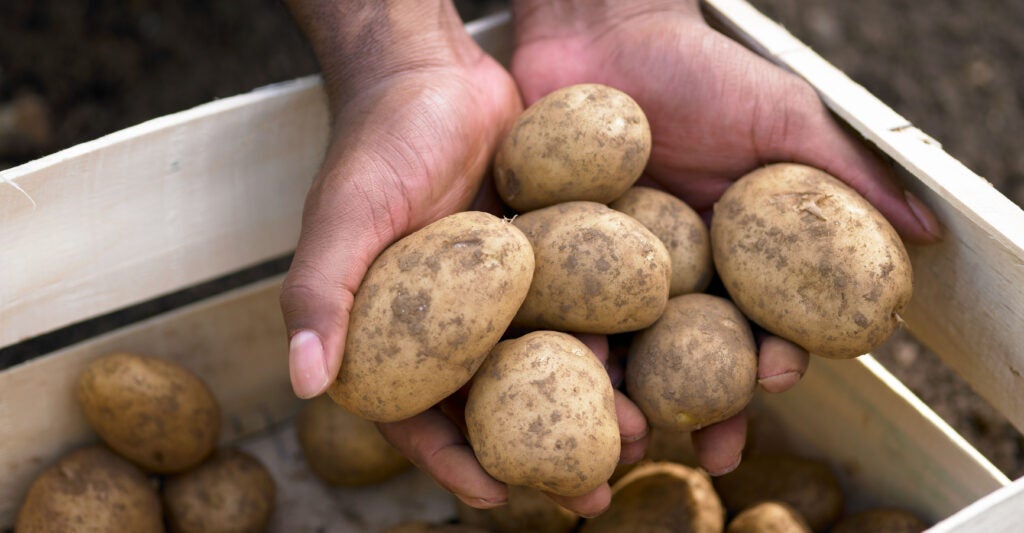If you’ve had to change your buying habits at the supermarket lately to save money, you’re not alone.
The stratospheric rise in food prices in the past three years has forced many families to forgo groceries they used to enjoy in exchange for cheaper alternatives.
This change in consumer behavior is emblematic of the painful decisions American families must make in the Biden-Harris economy. Disturbingly, nationwide data is even showing the resurgence of an economic phenomenon made infamous in the 19th-century Irish potato famine.
When a blight decimated the potato crop in Ireland, the supply of potatoes dwindled, and their prices rose dramatically. Normally, higher prices cause consumers to demand less of a product or service, but not this time.
Instead, demand for meat and other foodstuffs collapsed, and consumers tried to buy more potatoes. The blight reduced the supply of potatoes available, so the Irish were able to buy fewer of them—and tragically, many people starved.
But why did the Irish want more potatoes and less meat at precisely the time the former became much more expensive? The answer lies less in the rapid rise of food prices and more in the relative prices between those foods.
Let’s say an Irish family previously bought 4 pounds of potatoes for $1 a pound each and 1 pound of meat for $2, spending $6 in total. If potatoes jump to $2 a pound and meat increases to $2.10 a pound, then the family must spend $10 for the same weight of food, except now it’s all potatoes. They’re spending two-thirds more and getting a lower-quality meal.
Even if all food prices were rising in Ireland, potatoes remained the cheapest food available, so demand for them skyrocketed. Disturbingly, the United States is now seeing a similar shift in consumer food purchases.
Recent survey data published by the Federal Reserve Bank of Dallas show food manufacturers have seen a significant increase in consumer demand for sausage—even though the price of sausage has risen substantially, while demand for more expensive protein, such as steak, has fallen.
The same economic phenomenon that increased demand for potatoes in 19th-century Ireland despite higher potato prices is causing Americans to buy more sausage in the face of higher sausage prices. There is simply little else many families can afford today.
To be clear, most Americans aren’t starving like the Irish did back then. We have a much larger economy, even on a per capita basis. But Americans are going into debt to afford even the cheapest groceries. Credit card balances now exceed $1.1 trillion, and for the first time, Americans are spending more than $300 billion annually just in interest on credit card debt.
There are even financing companies created in the past few years that extend credit only for groceries. Prices have risen so much faster than earnings in the past four years that people can’t afford to feed themselves and their families.
The primary source of today’s food-price inflation has been runaway government spending and borrowing.
By January, the Biden-Harris administration will have added $8.3 trillion in federal debt and run down the Treasury’s cash balance by $1 trillion. That’s a net overspend of $9.3 trillion in four years—a record that surpasses that of any other administration. And that includes former President Donald Trump’s term, which was inflated by emergency COVID-19 spending.
President Joe Biden and Vice President Kamala Harris will be responsible for one-quarter of federal debt accrued in a span of nearly 250 years. It’s no surprise then that food prices continue setting records and that families are forced to buy the cheapest meat available.
Public policies have consequences—sometimes disastrous consequences.
Originally published by The Washington Times
